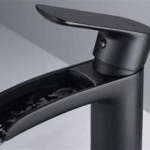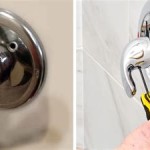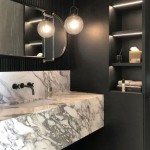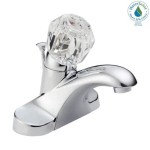What Type of Vinyl Flooring Is Best For Bathrooms?
Selecting the optimal flooring for a bathroom requires careful consideration of several factors, primarily focusing on the material's ability to withstand moisture, prevent slippage, and offer lasting durability. Vinyl flooring has emerged as a popular choice for bathrooms due to its water resistance, affordability, and aesthetic versatility. However, not all vinyl flooring types are created equal, and understanding their distinct characteristics is crucial for making an informed decision.
Bathrooms are inherently prone to moisture exposure. From splashing water during showers and baths to potential leaks from plumbing fixtures, the flooring material must possess exceptional water resistance to prevent damage such as warping, mold growth, and structural deterioration. Furthermore, the surface texture plays a vital role in minimizing the risk of slips and falls, especially when the floor is wet. The overall durability of the vinyl, including its resistance to scratches, dents, and stains, determines its longevity and appearance over time. Finally, the ease of installation and maintenance contributes to the overall cost-effectiveness and user satisfaction.
Understanding the Different Types of Vinyl Flooring
Vinyl flooring encompasses several distinct types, each with its own set of attributes that may make it more or less suitable for bathroom applications. The primary types include sheet vinyl, vinyl tile, and luxury vinyl flooring (LVF), which is further categorized into luxury vinyl plank (LVP) and luxury vinyl tile (LVT). Each type differs in its construction, installation method, and performance characteristics.
Sheet vinyl is sold in large rolls and is installed as a single, continuous surface. This minimizes seams, which are potential entry points for water. The inherent water resistance of sheet vinyl makes it a strong contender for bathrooms. Vinyl tile, on the other hand, is available in individual squares or rectangles. While vinyl tile is more cost-effective than some other options, the presence of seams increases the risk of water infiltration if not properly sealed. LVP and LVT are designed to mimic the appearance of hardwood planks or ceramic tiles, respectively. These options often feature a multi-layered construction, including a durable wear layer and a waterproof core, making them well-suited for moisture-prone environments.
The selection of the best type of vinyl flooring for a bathroom often hinges on the specific needs and preferences of the homeowner, considering factors such as budget, desired aesthetic, and level of DIY installation expertise.
Key Considerations: Water Resistance and Slip Resistance
Water resistance is paramount when selecting bathroom flooring. The primary advantage of vinyl flooring, in general, lies in its inherent water-resistant properties. Unlike natural materials such as wood or stone, which can absorb moisture and suffer damage, vinyl is impervious to water penetration. However, the level of water resistance can vary depending on the type of vinyl and the quality of installation.
Sheet vinyl, with its seamless installation, provides the highest level of water resistance. The absence of seams eliminates the risk of water seeping beneath the flooring and causing damage to the subfloor. LVP and LVT often feature a waterproof core, typically made of materials such as WPC (wood-plastic composite) or SPC (stone-plastic composite). These cores prevent water from penetrating the planks or tiles, even if moisture accumulates on the surface. Vinyl tile, while water-resistant itself, can be vulnerable to water damage if the seams between the tiles are not properly sealed with grout or sealant. Improperly sealed seams allow water to seep through, potentially leading to mold growth and subfloor deterioration.
Slip resistance is another critical factor, especially considering the potential for wet surfaces in a bathroom. Vinyl flooring is generally more slip-resistant than smooth, hard surfaces such as ceramic tile or polished stone. However, the surface texture plays a significant role in determining the level of slip resistance. Textured vinyl flooring, which features embossed patterns or a slightly roughened surface, provides better traction than smooth vinyl. Some vinyl flooring products are specifically designed with enhanced slip resistance, making them ideal for bathrooms where safety is a primary concern. It is advisable to look for products with a slip-resistance rating that meets or exceeds industry standards.
Evaluating Durability, Maintenance, and Installation
The long-term durability of vinyl flooring is crucial for ensuring its longevity and maintaining its appearance over time. The wear layer, which is the top layer of the vinyl flooring, provides protection against scratches, dents, and stains. A thicker wear layer offers greater resistance to wear and tear, making the flooring more durable and suitable for high-traffic areas such as bathrooms.
For bathrooms, a wear layer of at least 12 mils is recommended, although thicker wear layers of 20 mils or more offer even better protection. The material composition of the wear layer also affects its durability. Polyurethane (PU) coatings provide excellent scratch and stain resistance, while enhanced coatings with ceramic beads or aluminum oxide offer even greater durability.
Maintaining vinyl flooring is relatively simple, requiring only regular sweeping or vacuuming to remove loose debris and occasional damp mopping with a mild detergent. Unlike some other flooring materials, vinyl does not require waxing or polishing, which simplifies the maintenance process. For vinyl tile, it is essential to clean the grout lines regularly to prevent the buildup of dirt and grime. Stains can usually be removed with a mild cleaning solution or a specialized vinyl cleaner. It is important to avoid using abrasive cleaners or harsh chemicals, as these can damage the surface of the vinyl.
The installation process varies depending on the type of vinyl flooring. Sheet vinyl is typically installed by professional flooring contractors due to the complexity of handling large rolls and ensuring a seamless installation. Vinyl tile and LVP/LVT, on the other hand, are often designed for DIY installation, with options such as peel-and-stick or click-lock systems. Peel-and-stick vinyl tiles have an adhesive backing that allows them to be easily applied to a clean, level subfloor. Click-lock LVP/LVT features interlocking edges that allow the planks or tiles to be connected without the need for adhesive. Proper subfloor preparation is essential for all types of vinyl flooring installation. The subfloor must be clean, level, and free of moisture. Uneven subfloors can cause the vinyl flooring to crack or buckle over time.
In summary, the best type of vinyl flooring for a bathroom is one that combines exceptional water resistance, slip resistance, durability, and ease of maintenance. Sheet vinyl offers superior water resistance due to its seamless construction, while LVP and LVT with a waterproof core provide excellent protection against moisture. Textured vinyl flooring provides enhanced slip resistance. A thick wear layer ensures long-term durability, and regular cleaning maintains the flooring's appearance. The ease of installation depends on the type of vinyl and the individual's DIY skills. Careful consideration of these factors will help homeowners select the optimal vinyl flooring solution for their bathroom needs.

Luxury Vinyl Flooring Is A Great Choice For Chic Bathrooms

Best Bathroom Flooring Options

What Is The Best Flooring For Bathrooms Tarkett

Best Vinyl Flooring For Bathrooms

Waterproof Bathroom Flooring Options Twenty Oak

Best Bathroom Flooring Options

Best Bathroom Flooring Options

Vinyl Planks In Bathrooms Residential Inspiration Flooring

Waterproof Vinyl Flooring Guide Msi Surfaces

The Pros Cons Of Bathroom Flooring Options Carpet Court
Related Posts







